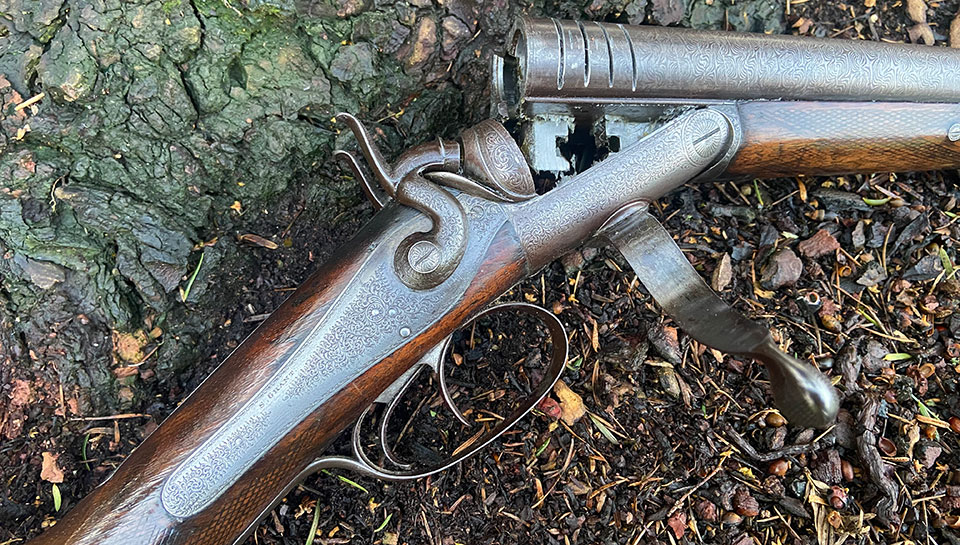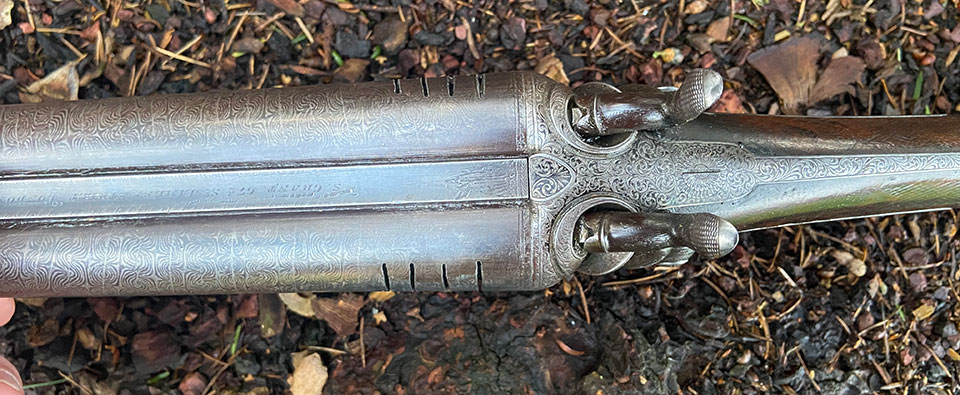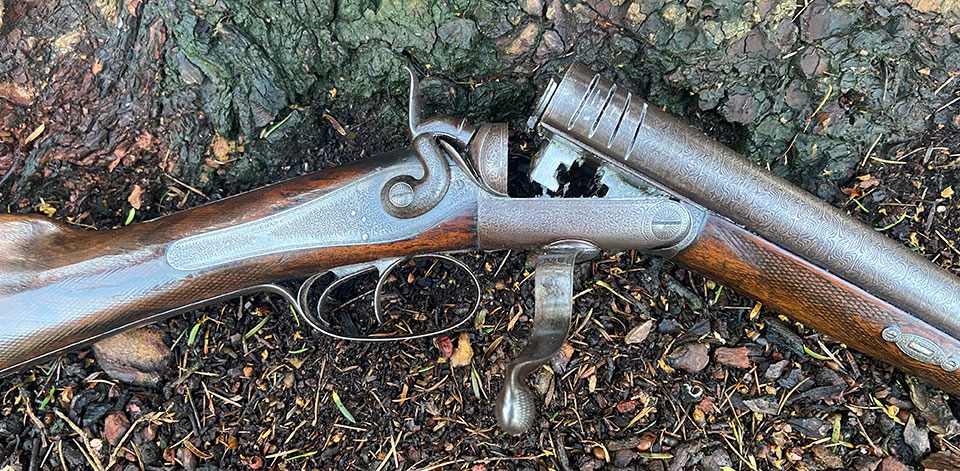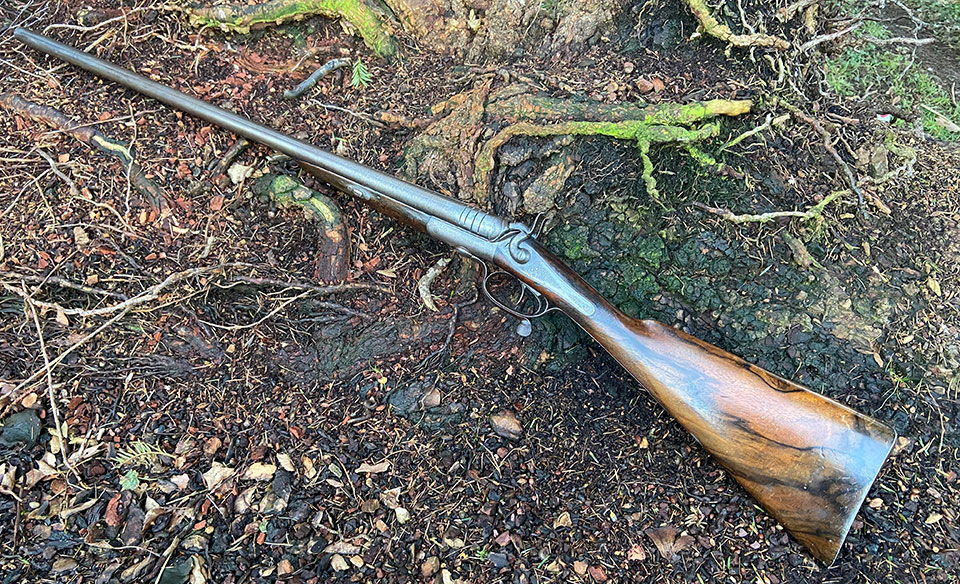I’m not often lost for words but those I uttered when this 12-bore Stephen Grant hammer gun was unloaded from the back of a car and placed on my table, are, unfortunately, unprintable.
Finding best guns from the mid-1800s that are new to market and have been ‘sleeping’ in the back of a cabinet for decades is exciting. When they are restorable and can, once again, be put in the hands of someone who will love them and shoot them, even more so.
This Stephen Grant, serial number 2705, was made in 1868 by Edwin Charles Hodges, on his own 1866 patent, with non-rebounding back-locks and a Jones rotary under-lever and screw-grip action.
The barrel walls are still very good, showing minimum thickness of 25 thou’ and it has never been re-proofed. I initially suspected it had been made with 30” barrels, later shortened to 28”. I was wrong; a check of the records showed that 28” was the original length; quite unusual for the period.

Mechanically, it is all in order and the woodwork, while showing some wear, will clean up nicely. So far, it all reads as quite promising but the tragedy will already be apparent to those looking at the photographs.
The gun was brought to me by a man who had inherited it from his father. When clearing up his effects they found two guns, of which this is one, not listed on a shotgun certificate and stored with some antiques.
The former owner had apparently taken it upon himself to ‘deactivate’ the guns with an angle grinder. I suspect he imagined this would make them legal to keep as display pieces.

The deactivation process consisted of removing the strikers and cutting four rough slots in the barrels at the breech ends. Not only does this make sleeving the (otherwise perfectly sound) barrels impossible, it remains a Section 2 shotgun in legal terms and has to be put on a shotgun Certificate. It was, in short, a pointless exercise in vandalism. Had the gun been un-cut, I would have paid the owner several hundred pounds for it. As it is, it was handed over as scrap.
It was, in short, a pointless exercise in vandalism
1868 was early in the life of Stephen Grant’s firm. In fact, having left his job as Managing Director of Boss, he didn’t start trading under his own name until 1867, when he opened a shop at 67a St James’s Street, London.

Don Masters lists 2480 as the first Grant serial number, so 2705 indicates it is among the first three hundred, or so, Grant guns made. It was sold to a Mr. John Hick in 1868, according to the order book, and the gun made before it was a muzzle-loader.
John Hick, of Mytton Hall, Bolton, was a Member of Parliament, art collector and leading industrialist. He pioneered environmental protection legislation by successfully challenging two local cotton mills that were releasing pollution in to the River Ribble, in court, in 1880. He died, aged 78, in 1894.
The ‘ECH’ trademark on the bar flats is underscored with ‘157’ suggesting it is the one hundred and fifty seventh gun made to the 1866 Hodges patent extractor.

The lock plates bear a simple ’S. Grant’ and the rib ‘67a St James’s Street, London’. Engraving is of fine and medium scrolls and the action-filing, wood-to-metal and metal-to-metal fit is first class, as is always the case with guns made by Hodges in his Islington workshops.
At first I considered the gun a lost cause. Properly restored it would ordinarily retail for a good £3,000. However, this one I had to look at with different eyes. It was never going to be a gun that could be sold to the public. The challenge was to see if it could be made to shoot again.
Sleeving in the conventional manner would involve keeping the breech ends but since those are the parts so visibly damaged, while the actual barrels along their length are in good order, sleeving doesn’t offer the right solution.
Teague Engineering offer a chamber-sleeving service. That is usually employed when a gun has corroded or enlarged chambers and extraction or ejection problems occur.
it would be an easy trick to black them and put the gun into an auction
However, might chamber sleeving be a solution to the issue of these vertical slots cut into the barrels?
If we can weld them, strike-off, polish, chamber-line and pass re-proof, then we are in business. The choice then would be to black the barrels to disguise the weld-filled cuts, or brown them and look at the marks as part of the gun’s life, rather than hide them.
Commercially, it would be an easy trick to black them and put the gun into an auction and let the market take care of the problem. That would be unethical (though perfectly legal).The repair would be impossible to spot, without removing the blacking and attempting to re-brown the Damascus. Browning would uncover the hidden marks.
As of now, the gun is in the workshop. Some ambitious ideas about welding and acid-etching to mimic the Damascus pattern are being tested. We shall see how they work out in a few weeks.

Published by Vintage Guns Ltd on




